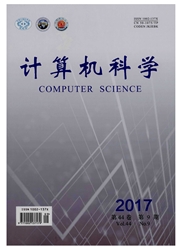

 中文摘要:
中文摘要:
研究了拓扑控制技术对MANET网络性能的影响。与其它相关文献不同的是,在分析及建立仿真模型过程中,综合考虑了拓扑控制对物理层、MAC层和网络层带来的影响,而非仅从MAC层角度出发。仿真结果说明,实施拓扑控制尽管能够带来信道空间复用能力的提高,但最终反映网络承载业务能力的网络端到端通过量指标却出现了下降。并且存在一个倾向:网络拓扑的信道空间复用能力越强。该指标越差。导致这种现象的主要原因是:在拓扑控制方案所产生网络拓扑中,分组的平均转发次数以及传输失败概率增加。
 英文摘要:
英文摘要:
The effect of topology control technology on the performance of MANET is studied in this paper. In the course of analysis and simulation model development, we take the impact of topology control on network layer, MAC layer and physical layer into consideration. This diverges from other relative works that only take the MAC layer perspective. Simulation results show that topology control technology can reduce energy consumption and improve spatial reuse capability of the whole network, but the end-to-end throughput measure fails to be improved, which reflects the capability of network to support traffic. There seems to be a tendency-the higher spatial reuse capability a topology has, the weaker end-to-end throughput it. The main reason is that the number of packet forwarding events and trans mission failure events increases, when topology control methods are applied.
 同期刊论文项目
同期刊论文项目
 同项目期刊论文
同项目期刊论文
 期刊信息
期刊信息
